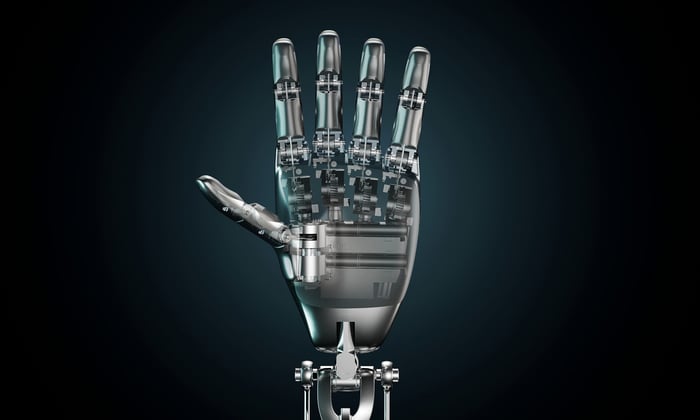Over the past three years, artificial intelligence (AI) has largely been deployed to train large language models (LLMs) and to build productivity-enhancing software for the workplace. But the next phase of AI's evolution extends well beyond chatbots or digital assistants.
Two trillion-dollar titans -- Nvidia (NVDA -0.17%) and Tesla (TSLA 1.39%) -- are spearheading AI's next frontiers: quantum computing and robotics.
As these "Magnificent Seven" powerhouses quietly develop next-generation AI systems, their efforts could redefine how humans and machines interact -- reshaping entire economies for decades to come.
Nvidia's ambition: Bridging classical and quantum worlds
Nvidia is no stranger to paradigm shifts. What began as a company building chips to enhance graphics for gamers has evolved into the backbone of the generative AI revolution. Over the past three years, the company's graphics processing units (GPUs) have powered the rise of models like ChatGPT, generating hundreds of billions in revenue and record-breaking profits.
Now, Nvidia has its sights set on an even larger opportunity: quantum AI -- a market some on Wall Street believe could one day reach $10 trillion. At the center of this push is CUDA-Q, Nvidia's quantum-classical computing architecture. By integrating quantum algorithms with its GPU infrastructure, the company is enabling hybrid workflows that bridge today's conventional AI systems with tomorrow's quantum breakthroughs.
This approach could prove transformative. In fields like pharmaceuticals, energy, and autonomous systems design, quantum-powered simulations could unlock solutions to problems long considered beyond reach -- from molecular drug discovery, advanced weather predictions, and reimagining city planning.
If successful, Nvidia won't just be a main character within the next chapter of the AI story, it could become the primary author writing the next era of computational science.
Tesla's robotics revolution: Why Optimus could be the company's next catalyst
While Nvidia is designing the hardware to make machines think faster, Tesla is focused on bringing them to life. Enter Optimus -- the humanoid robot that could revolutionize how the world views automation.
Optimus may be Tesla's most ambitious project yet: a bipedal robot capable of performing repetitive human tasks through the power of AI. It represents a fusion of robotics, vision systems, and neural network learning.
In recent demonstrations, Optimus has walked autonomously, handled delicate objects with precise dexterity, and even sorted battery components on Tesla's factory floors. CEO Elon Musk believes Optimus could one day eclipse the company's electric vehicle (EV) business, suggesting that 80% of Tesla's long-term value may come from robotics.
During Tesla's second-quarter earnings call, Musk stated, "There will probably be prototypes of Optimus 3 by the end of this year, and then scale production next year." If the company succeeds in commercializing Optimus, the implications extend far beyond enhanced vehicle production.
The robot could reshape labor economics across logistics services, warehouse manufacturing, retail environments, and even elder care. Optimus has the potential to transform Tesla from an automaker into a multi-industry technology powerhouse.

Image source: Tesla.
The bigger picture: Catalysts for 2026 and beyond
Both Nvidia and Tesla are entering 2026 with catalysts that could redefine their long-term roadmaps.
For Nvidia, upcoming GPU architectures like Blackwell Ultra and Rubin will capture Wall Street's attention, but investors should not overlook the company's growing role in quantum AI as more advanced workloads transition from theory to production. Meanwhile, Tesla's Optimus signals the dawn of scalable robotics -- an inflection point that could prove as transformative as the launch of the iPhone.
For long-term investors, the takeaway is clear: While both Nvidia and Tesla already dominate their respective industries, their boldest products may still lie ahead. Quantum computing and humanoid robotics aren't distant dreams -- they are the next trillion-dollar visions, and these two companies are leading the charge into AI's next revolutionary chapters.





